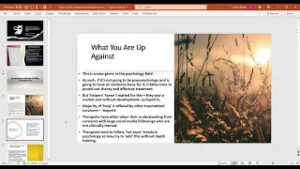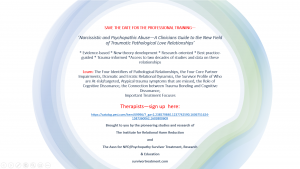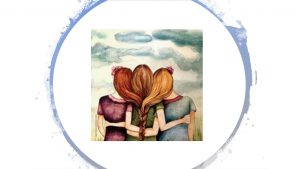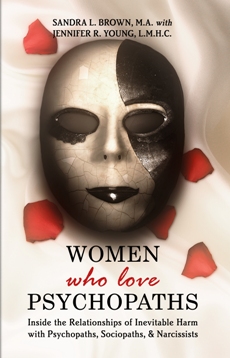“Some of the most disturbing realities are not that pathology exists, but that so little public pathology education for the general public exists.”
-Sandra L. Brown, M.A., The Institute
The Problem of the Unrecognized Face of Pathology
We live in an age where ‘Positive Psychology’ has ingrained a mantra into society’s psyche – which is:
If you think it
(i.e., the narcissist/psychopath needs to change his behavior)
Then you can make it happen
(i.e., your relationship will be successful when he changes)
That may be true when you are with a person who has normal psychology. But it’s a long way from being true for those who have pathology.
For many years, people have thought that if they focused hard enough, loved long enough, tolerated more, and carried a positive attitude, their partner would somehow become unaffected by the personality disorder – even the psychopathy they bore. People believed this because they were often told this by professionals – all under the guises of different therapy approaches and theories.
For years, people who had gone through traditional forms of couples counseling came to us bearing the scars from not only the pathology in their partner who abused them, but by the wrong application of couples counseling therapy. When there was the pathology of having no conscience, no lack of remorse, impaired insight, or low impulse control in a partner – traditional forms of counseling proved unsuccessful. What occurred were often techniques in Mirroring, Love Languages, Communication Building, Intimacy, or Spiritual Reflecting for a partner who had no insight and lacked empathy for what his partner had experienced. Equally prevalent, were ideologies that ‘the pathological came into my life to heal me,’ or ‘this is a spiritual manifestation for me to grow by,’ or ‘he is in my life to heal my issues from early childhood.’
Equally damaging, lack of public information often occurs through women’s organizations that lumps problem behavior in one category (abuser) and leave the impairment of pathology out of the equation. People are then forced to conform to theories that do not fit their dynamics in order to get help, and miss the crucial ability to understand which disorders hold hope for change, and which do not.
There is emotional, physical, and relational danger in applying pop psychology principles to something as aberrant as pathology. Trying to ‘attract’ the ‘positive’ to the relationship so the pathology is transformed leaves people ignoring the traits of pathology that can seriously harm them. It is no wonder we are not further ahead in being able to spot abnormal psychology in others and avoid it.
The truth is, nothing impacts non-pathological people as much as being in a relationship with someone who is pathological. Add to that the lack of understanding of how pathology manifests in relationships, and the manipulative behavior of those with pathology – and you have partners, families, and children who are devastated almost as much by the lack of information, as by the destruction that happens at the hands of the pathological. Without the education of ‘what’ the disorder is, ‘how’ it came to be, ‘whom’ it effects, and ‘why’ it harms others – partners, families, and children live in the shadows of unspoken confusion and pain. This also bleeds over to family court, mediators, social workers, and judges who also do not recognize pathology, or care to understand it, leaving cases in limbo and in danger labeled as ‘contentious’ or ‘high conflict.’
Many who have found The Institute’s programs and products have said, ‘This is the first time anyone has ever explained this to me in a way I could understand.’ I have seen that when people finally found information that described their partner’s pathology, the awareness often gave way to crying, and then to anger. It was the information they wanted that was out there all along, but was not easy to find, or was sometimes not easy to understand or explained in layman’s terms. Equally as frustrating is such poor and inaccurate training generated out of generic approaches to pathology in graduate schools which leaves professionals with the inability to spot pathology in others, and a total loss about how to treat the survivors. Consequently, the mental health field has done little to train the public about what pathology is, the limitation of wellness it implies, and what it looks and acts like in relationships, because they themselves do not know.
The efforts of The Institute are to bridge the gap in public pathology education to both survivors and treatment providers. One of our bridges in public pathology education is for survivors and is achieved by providing the best and most up-to-date recovery options for their unique aftermath symptoms. The second bridge is our approaches for victim service providers in the fields of mental health, criminal justice, nursing/medical, pastoral, addiction, and law enforcement. Our products for service providers, as well as our face-to-face trainings, have equipped professionals in many fields from many countries with the tools they need to help heal the aftermath of pathological love relationships.
An M.D. said to me recently, ‘I consider pathology and it’s untaught concepts to be the number one health crisis in this country.’
We couldn’t agree more. We hope that the work of the many professionals who are involved with The Institute will be the part of the solution to the unrecognized face of pathology and it’s victims.






